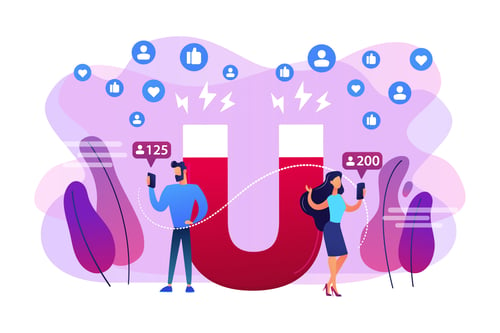Google Display Network can help you reach the user who never searched for your product or service before. It can get your display ads in front of targeted audiences across the globe. Our blog will explain the benefits and functions of leveraging the network to help boost your campaign performance and brand awareness.
The Google Display Network (GDN) is a platform SMBs should leverage to reach over 90% of global internet users, extending across more than two million websites. Display campaigns function just as well on their own as they do when paired with your Google search campaigns. A well-planned GDN helps you find the right audience at the right place and the right time.
Some advantages of GDN are:
-
-
Better control your budget
Unlike other channels requiring large sums of investments to secure placement in certain media, it is relatively inexpensive to start running display ads. You can bid on a cost per click (CPC) or a cost per thousand impression (CPM) basis. CPC is a great choice if your goal is to drive traffic to your site with your ads while CPM is best when you want to focus on branding and ensuring that your message is seen by as many of your target user groups as possible.If you’re already running a campaign on Search Network, it may be a good idea to set a separate bid for when your ads appear on Display Network sites. -
The appeal of visual ads
While Google Search text ads are based purely on search intent, display ads offer the perfect compliment to match searcher’s interests, and to give a better visual of what you’re offering. Google Display Network allows you to use much more engaging visual ads and even animated ads such as GIFs or MP4 formats to intensify its effectiveness on your audience. With GDN you can put your ads in front of people before they start searching for what you offer, which can be key for your overall advertising strategy. -
Changes are made in real-time
As Google Ads provide analytics for you to check your ad’s performance, you can alter and adjust your ads easier with much more convenience and control. This is far more effective and saves time compared to the usual television or poster advertisements. You can also pause any campaigns or advertisements if the results are undesired.
-
-
-
Dynamic format
With Google Display ads and the GDN, you can upload multiple assets at once for example, multiple headlines, logos, videos and images. Google will then automatically adjust their size, appearance and format to fit just about any available ad space. This will help you save time and you won’t need to update the ad multiple times.
-
Defining your audience and its strengths for your Google ads -Audience Targeting
Audiences are groups of people with specific interests, intentions and demographic information estimated by Google’s machine learning. Audience targeting gives you the ability to deliver your ads with the right message at the right time to the right prospects so you can optimize your ROI. It also provides the foundation for leveraging personalisation technologies to increase the effectiveness of your Google ads. Research also shows that 52% of consumers are somewhat likely to switch brands if a company does not make an effort to personalize their communications to them. By keeping your audience in mind, this will deliver an outstanding customer experience that converts. We’ve previously provided insights on building an effective buyer persona to help form your targeted audience.
Choosing Audience Type for Your Display Ad Campaign
We’ve summarised a few different audience types that you can use for targeting in your campaigns:
1. Custom Audience
Custom audiences help you reach your ideal audience by entering relevant keywords, URLs and apps. Based on your campaign goals and bidding strategy, the system will interpret all of those signals and choose an audience that is focused on either reach, consideration or performance. With the new update, you no longer create custom affinity or intent audiences. Now when you set up a new custom audience, you’ll have the option of building it based on either:
1. People with any of these interests or purchase intentions
2. People who searched for any of these terms on Google (e.g. Google.com and Youtube)
There are also custom audience inputs that you can add to your campaigns to further optimise how your display ads approach users.
- Keywords: reach users based on their interest or behaviours
- URL: reach users who browse on websites that are similar to yours
- Apps: reach users who use apps similar to yours
For example, instead of reaching the Sports Fans affinity audience, a running shoe company may want to switch it up and reach avid marathon runners. With custom audiences, the shoe can easily define this audience by entering keywords, URLs, and apps:
-
- Entering interests such as “10k runs”, “triathlon athlete” or “long distance runner”
- Using URLs of website with content surrounding distance running, training routines and schedules, marathon athlete nutrition and other similar topics
- Entering apps in the Health, Fitness and Lifestyle category that an avid marathon runner may be interested in like Google Fit.
- Custom audiences can give you way more flexibility and specificity with your targeting, and are designed to automatically choose the right audience based on your inputs, your campaign goal and bid strategy.
2. Remarketing Audience
Remarketing audience targeting allows you to show your campaign to users who have visited your website earlier and showed interest in your products and services. A key part of remarketing paired with an appealing display ad is the ability to re-engage your prospects.
3. Similar Audience
Similar audience targeting helps you target new users who have similar interests to those who have already visited your site previously, or existing customers. A similar audience list is most commonly used while targeting new potential users.
The recent trend that advertisers have been hopping onto is Google’s Machine Learning capabilities. By leveraging that, Google Ads could automatically and continuously optimise and improve your Ad campaign for the best performance smartly and more efficiently.

Google’s machine learning is a mastermind at processing the data from your ads and finding natural patterns in the data to form connections. It firstly takes into account all of the available data from users who engage with your ad and convert on your website, for example, age, gender, location, interest and much more. It then accurately profiles those users, and based on the profile to find the ‘similar audience’ who might also react to your ads with better performance. Rest assured, you don’t need to spend a lot of budget on this, as Google’s machine learning comes into play and attempts to at first pick smaller groups of people within the audience to target creating ‘small samples’ with your controlled budget. It continues to use these ‘small samples’ to fine tune and expand your audience based on those data points.
Needless to say, the Similar Audience function saves a lot of time yet gives a better performance. We’ve done quite a few human vs machine experiments to compare Google Display Ads Custom Audience and Similar Audience to see which performs better. We manually built an audience using Custom Audience based on specific keywords overlayed with the client’s interest (and adjusted the audience from time to time), to compare to Google’s Machine Learning Similar Audience with the same Ads. As expected, Similar Audience performed much better, as Google’s machine learning is a constant process of testing data, analyzing results and making modifications in user selection accordingly producing an algorithm that will help optimize your ads repeatedly. As an owner of SMBs, you might not have a lot of time optimizing your audience from time to time, utilising ML technology effectively can give your ads a cutting edge
Make sure to check out our previous blogs on How to Further Optimize Your Google Ad Campaigns and A/B Testing to Compare Ad performance! Get in touch with our eCommerce and digital marketing expert now if you need assistance in taking your first step in creating a Google Ad Campaign!

